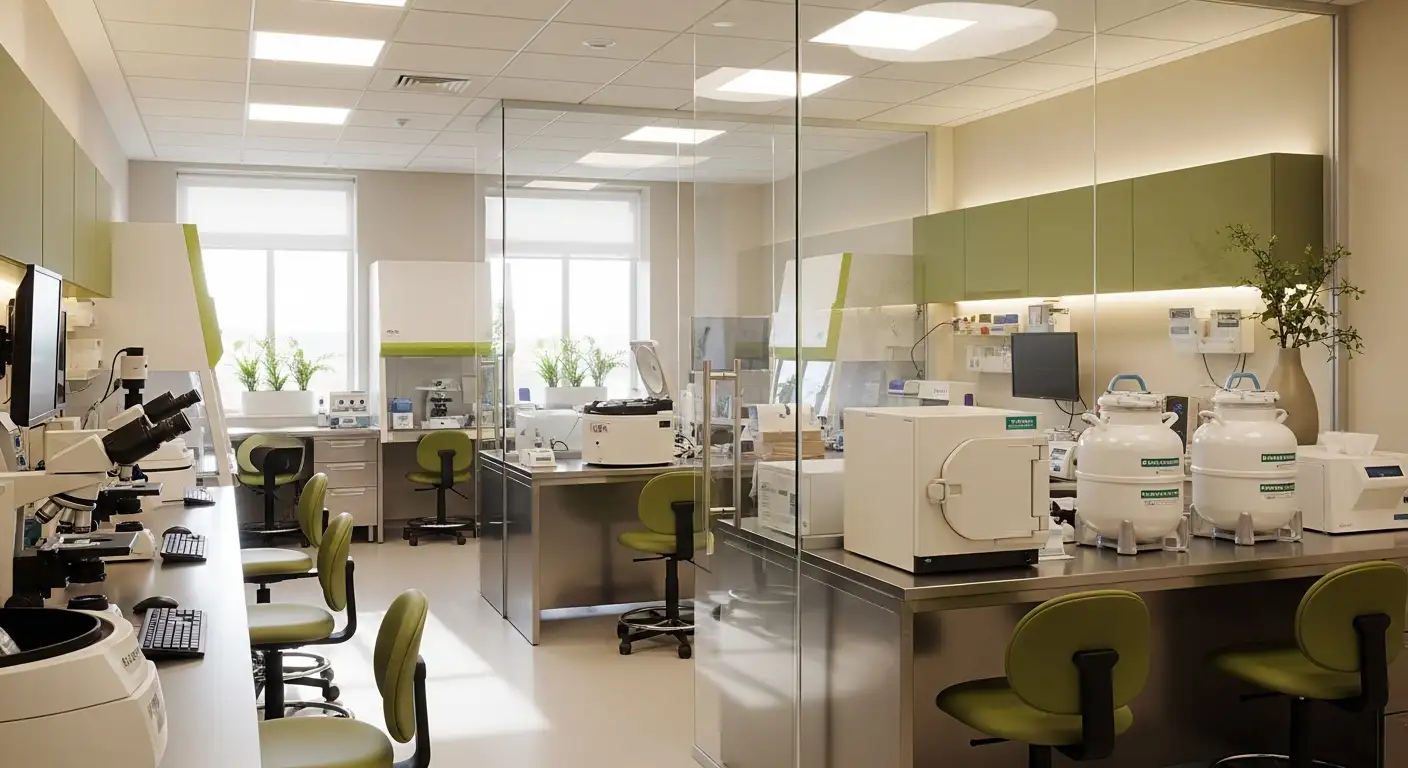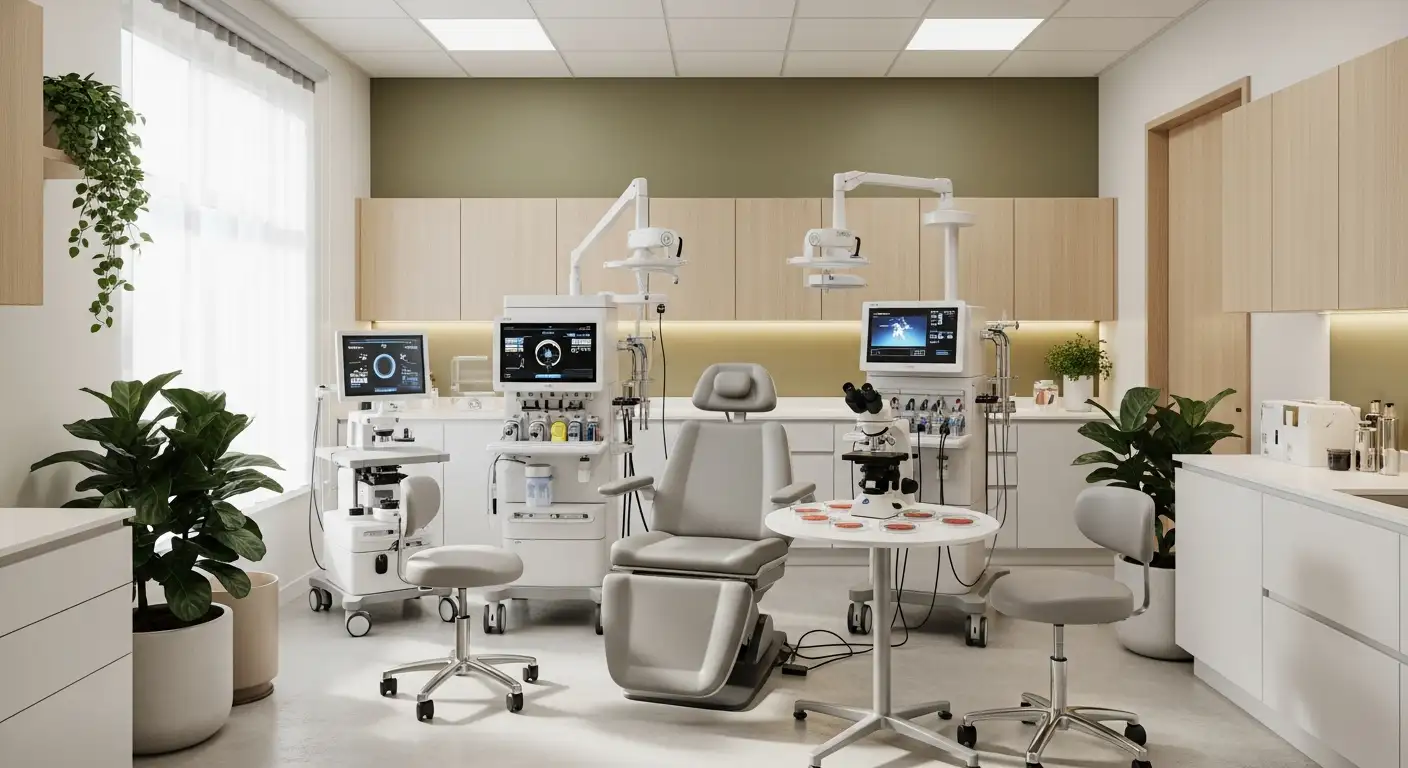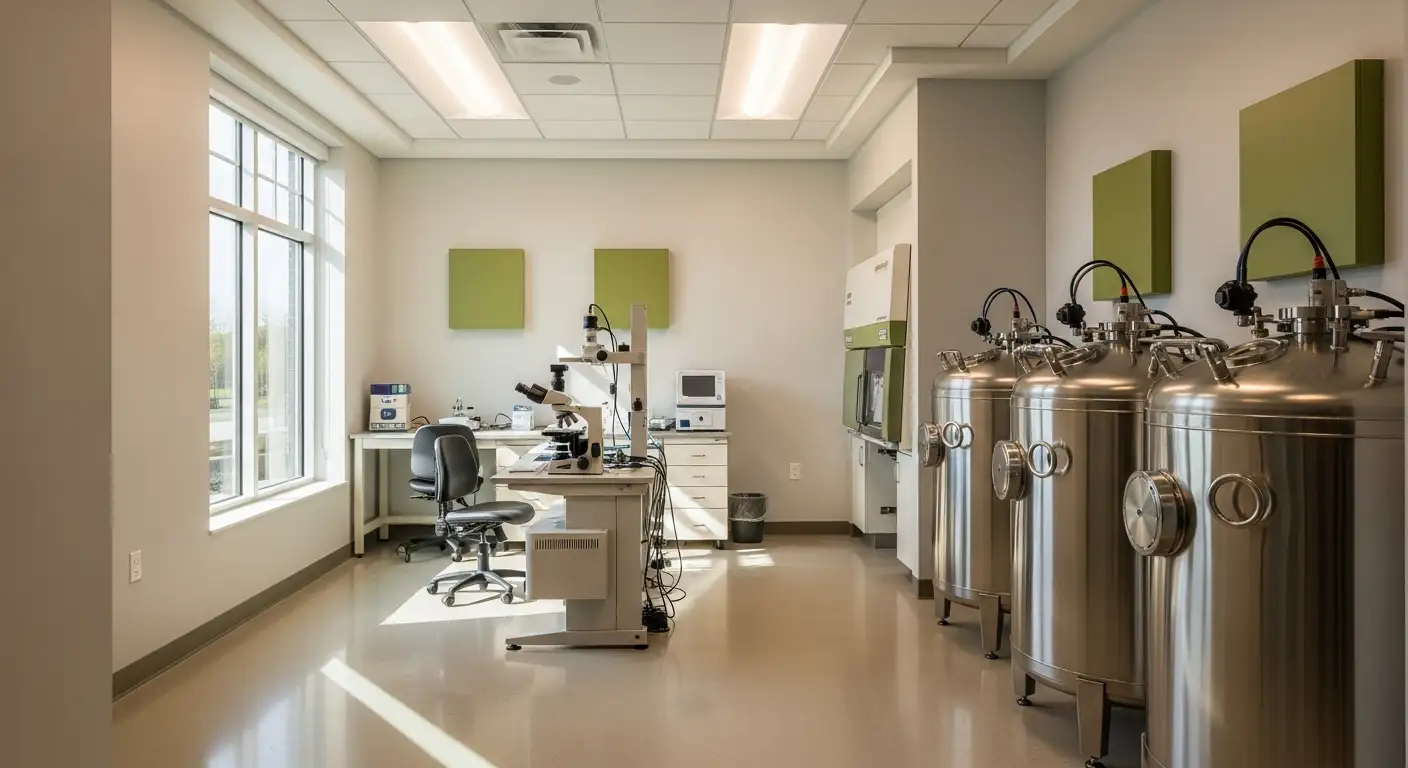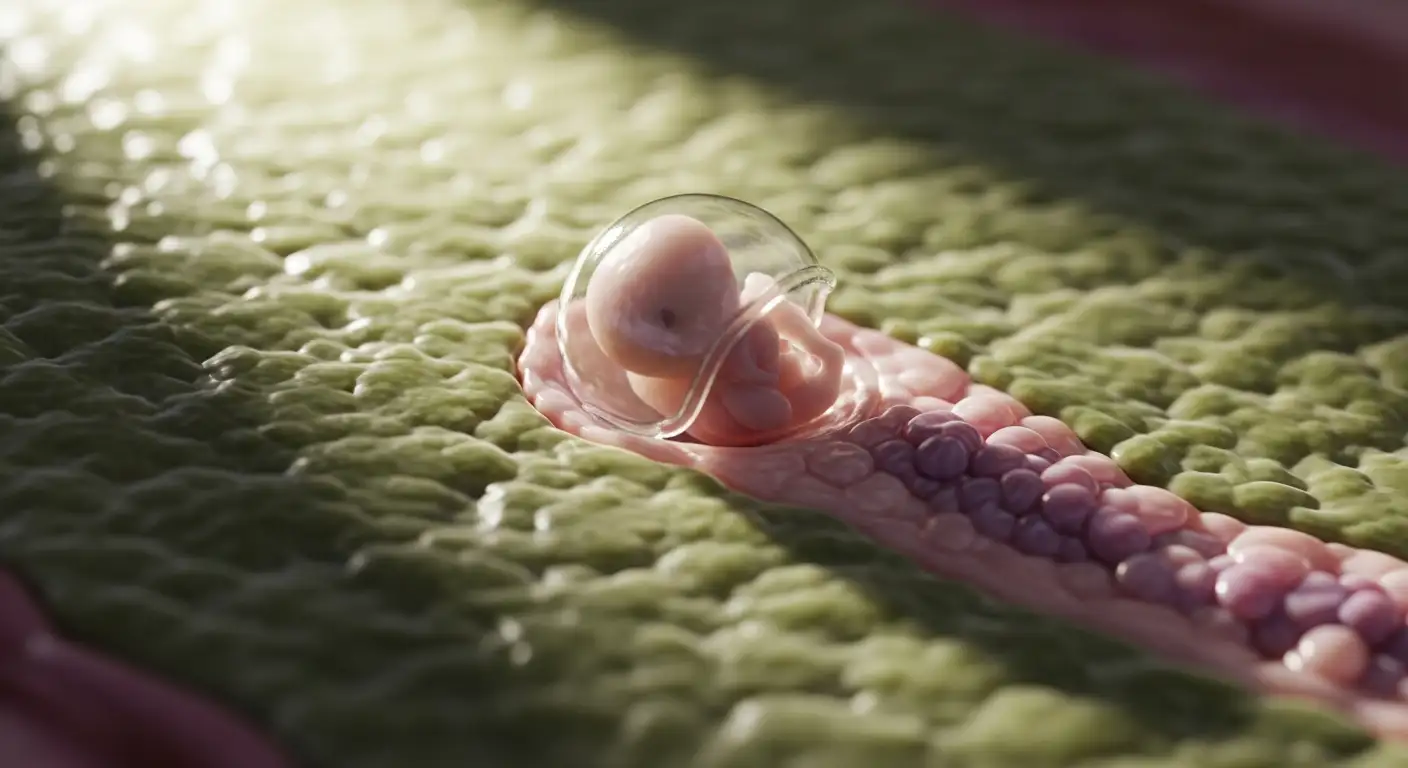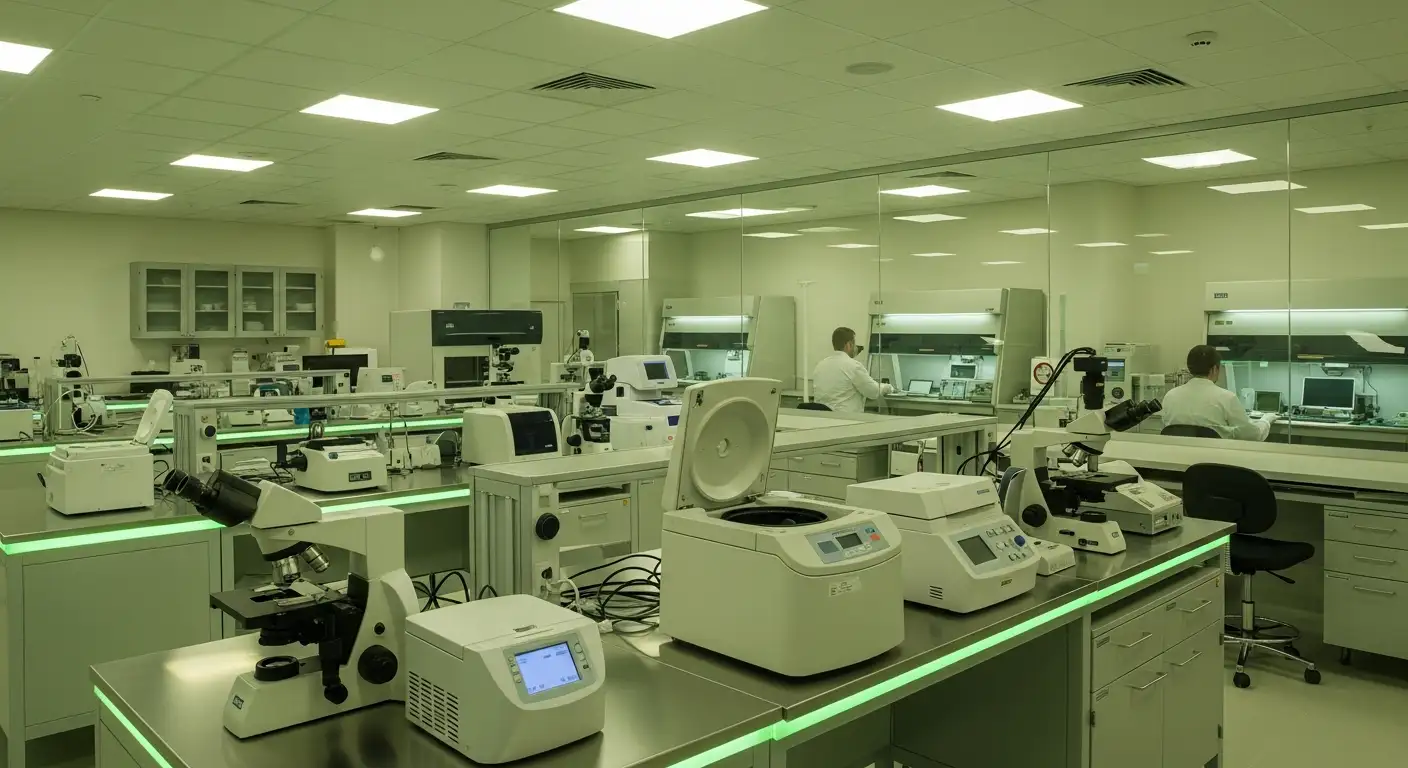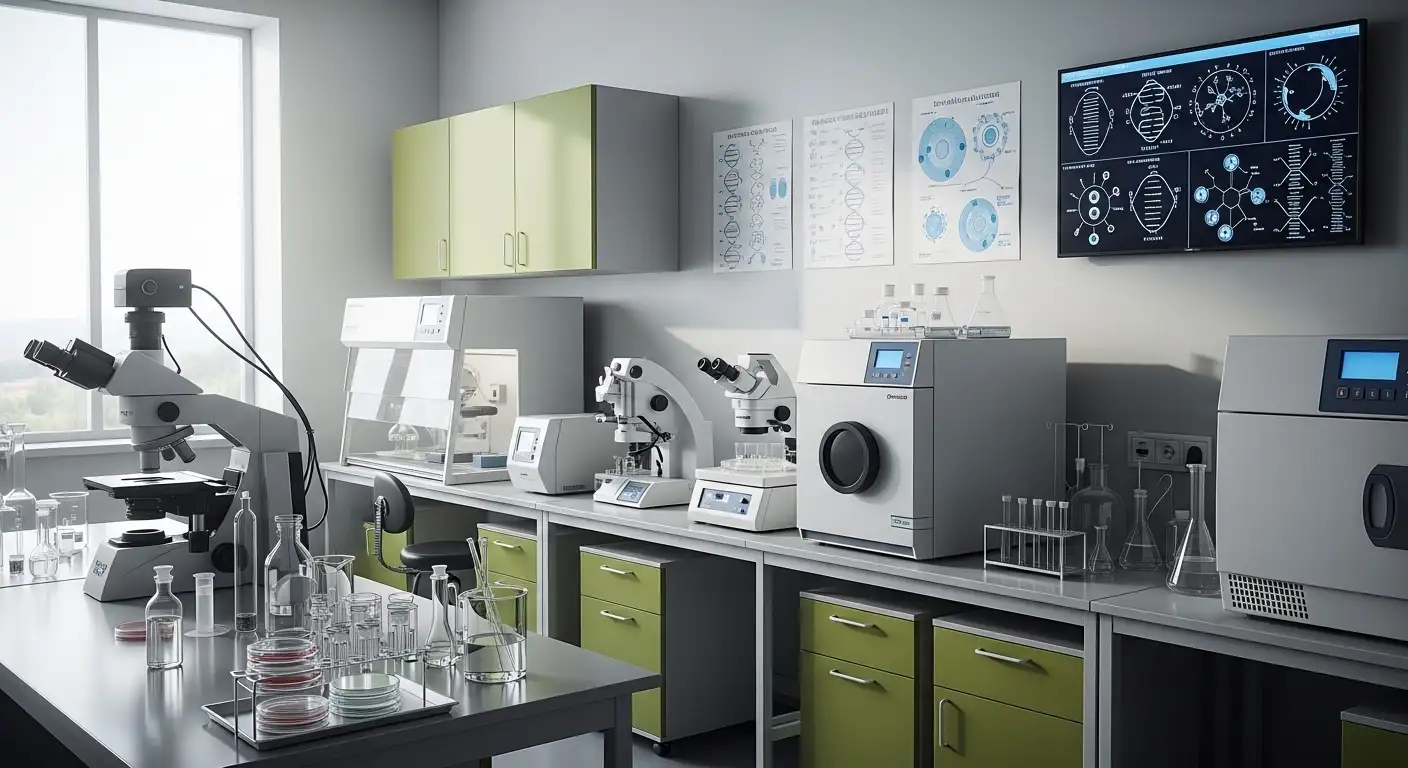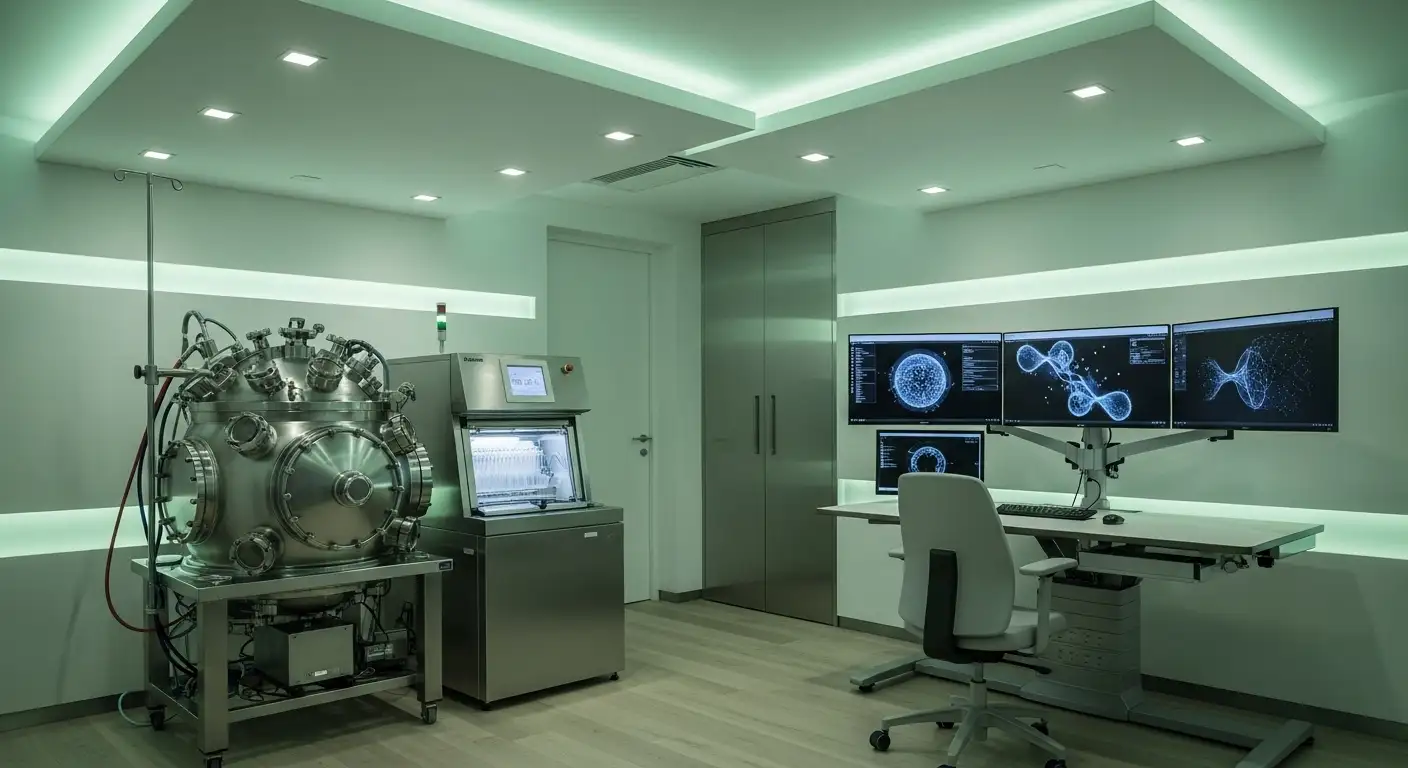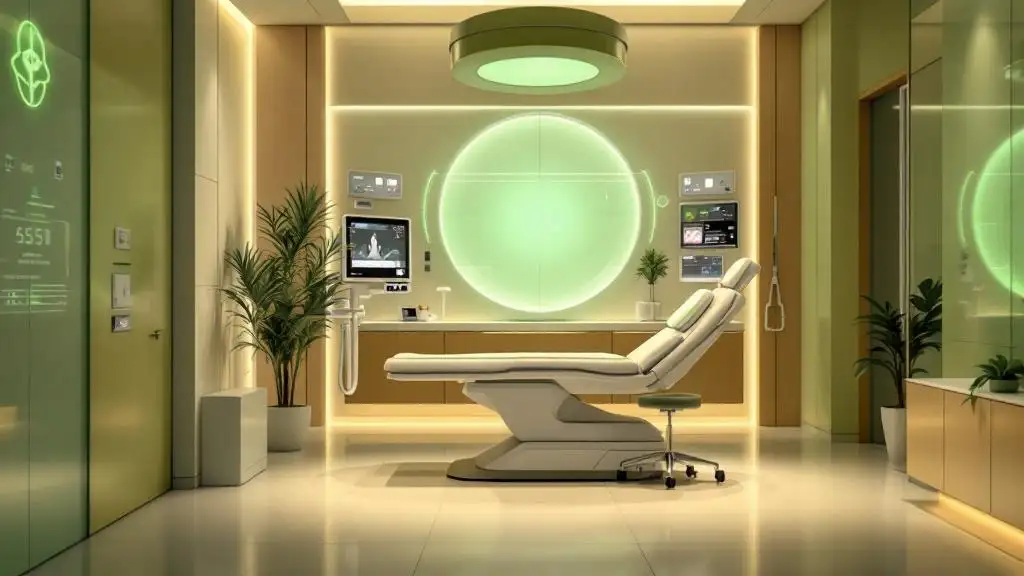What causes unexplained infertility in women
Delving Into the Mysteries of Unexplained Female Infertility

Understanding the Challenge of Unexplained Infertility
Infertility affects approximately one in six couples worldwide, posing a complex and emotionally taxing challenge. While many causes of female infertility are identifiable—such as ovulatory disorders, structural abnormalities, or age-related decline—a significant portion, nearly 20%, of couples face what is termed 'unexplained infertility.' This condition emerges when all standard diagnostic tests return normal results, yet conception remains elusive. This article explores the multifaceted factors potentially contributing to unexplained infertility in women, examines current diagnostic approaches, and outlines emerging treatment modalities and research directions to address this enigmatic reproductive hurdle.
Defining Unexplained Infertility: Criteria and Prevalence
What constitutes unexplained infertility in women?
Unexplained infertility is defined when a couple cannot conceive after 12 months of regular, unprotected intercourse, or six months if the woman is over 35 years old. This diagnosis is made only after a comprehensive evaluation shows no identifiable cause. Key diagnostic criteria include normal menstrual cycles, confirmation of at least one open fallopian tube through tests like hysterosalpingography (HSG), and normal semen analysis in the male partner.
This condition accounts for about 20% of couples facing infertility. Despite thorough medical assessments covering ovulation, tubal patency, and sperm quality, no specific abnormalities are found. It highlights the complex nature of some infertility cases where subtle or undetected factors may interfere with conception.
Prevalence statistics globally and in clinical contexts
Unexplained infertility affects a significant portion of infertile couples worldwide. Approximately one in five couples seeking fertility care falls into this category, making it a common diagnosis in reproductive medicine. Globally, infertility affects around one in six people of reproductive age, with a notable percentage being due to unexplained causes.
Consistent and clear diagnostic criteria are crucial for effective clinical management and research advancement. Efforts continue toward international consensus on defining unexplained infertility to standardize treatment approaches and improve outcomes.
Known Female Infertility Causes and Their Exclusion in Unexplained Cases
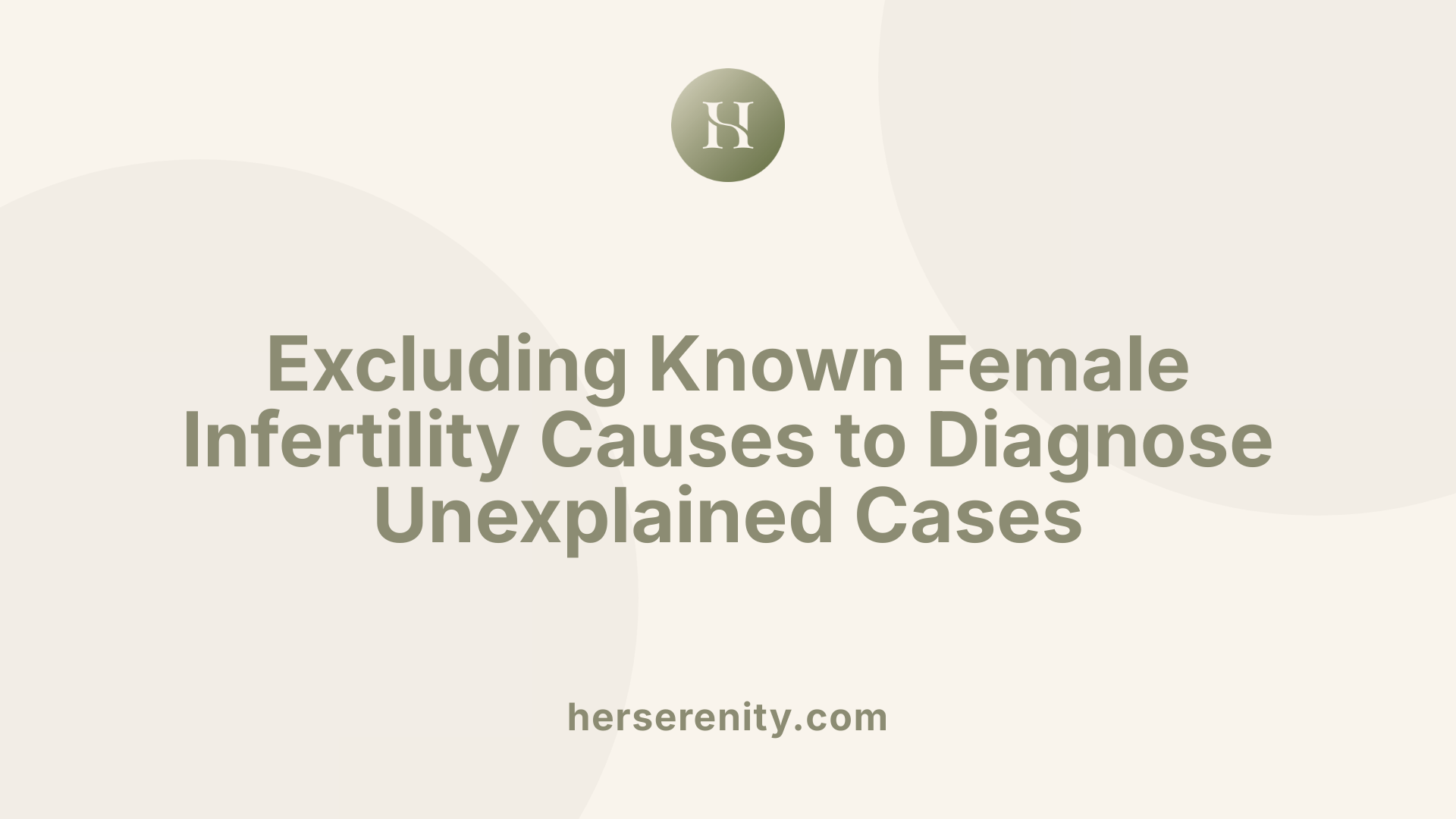
What common causes of female infertility are ruled out in unexplained infertility?
Unexplained infertility is diagnosed only after a thorough evaluation excludes several recognized causes of female infertility. These known causes include:
Ovulatory disorders such as polycystic ovary syndrome (PCOS), hypothalamic amenorrhea, primary ovarian insufficiency, and excess prolactin. These conditions affect normal ovulation through hormonal imbalances and are identified via hormone panels including FSH, estradiol, anti-Müllerian hormone (AMH), and prolactin.
Endometriosis and pelvic adhesions. Endometriosis affects 10–15% of women of reproductive age and can cause infertility by creating inflammatory lesions and adhesions that impair ovarian and fallopian tube function. Pelvic adhesions often result from pelvic inflammatory disease caused by infections like Chlamydia trachomatis, leading to tubal scarring and blockage.
Uterine abnormalities such as fibroids (particularly submucosal fibroids), polyps, intrauterine adhesions, and congenital anomalies like septate uterus. These abnormalities may interfere with implantation or increase miscarriage risk and are detected by ultrasound, hysterosalpingogram (HSG), or hysteroscopy.
Tubal obstruction due to infections, previous surgeries, or endometriosis is a significant cause of infertility by preventing sperm and egg meeting or embryo transport. Fallopian tube patency is assessed with HSG or specialized tubal testing.
Age-related decline in ovarian reserve and oocyte quality. Women over 35 often experience diminished ovarian reserve with decreased quantity and quality of eggs, raising the risk of infertility and miscarriage.
When all such conditions are excluded by comprehensive testing—including medical history, ultrasonography, tubal evaluation, and hormone assessments—a diagnosis of unexplained infertility is considered. This ensures that unexplained infertility truly reflects cases without identifiable causes, highlighting the need for further research and individualized management.
Subtle and Emerging Factors Behind Unexplained Infertility
What subtle conditions might contribute to unexplained infertility?
Unexplained infertility occurs when standard evaluations show no clear cause, yet pregnancy remains elusive. Several subtle factors may contribute to this condition, posing challenges for diagnosis and treatment.
One significant factor is luteal phase defects, where the corpus luteum produces insufficient progesterone or the endometrium fails to respond adequately to progesterone. This hormonal imbalance can impair implantation despite normal ovulation and open fallopian tubes. Diagnosis may require specialized tests like endometrial biopsy or progesterone blood levels.
Minor anatomical or functional abnormalities may also underlie unexplained infertility. These include failures in the egg pickup mechanism by the fallopian tubes, which can block or delay the transport of eggs even when the tubes appear open. Furthermore, abnormal prostaglandin levels, especially those linked to undiagnosed endometriosis, may disrupt tubal function or endometrial receptivity, contributing to implantation failure.
Endometrial receptivity issues are another emerging focus. Even when hormonal levels and structural assessments are normal, the uterine lining’s ability to support embryo implantation could be compromised due to subtle cellular or molecular changes.
Together, these subtle conditions highlight the complexity behind unexplained infertility. Advancing diagnostic techniques and personalized treatments targeting these nuanced factors hold promise for improving outcomes for many affected individuals.
Diagnostic Evaluation and Testing Approaches for Unexplained Infertility
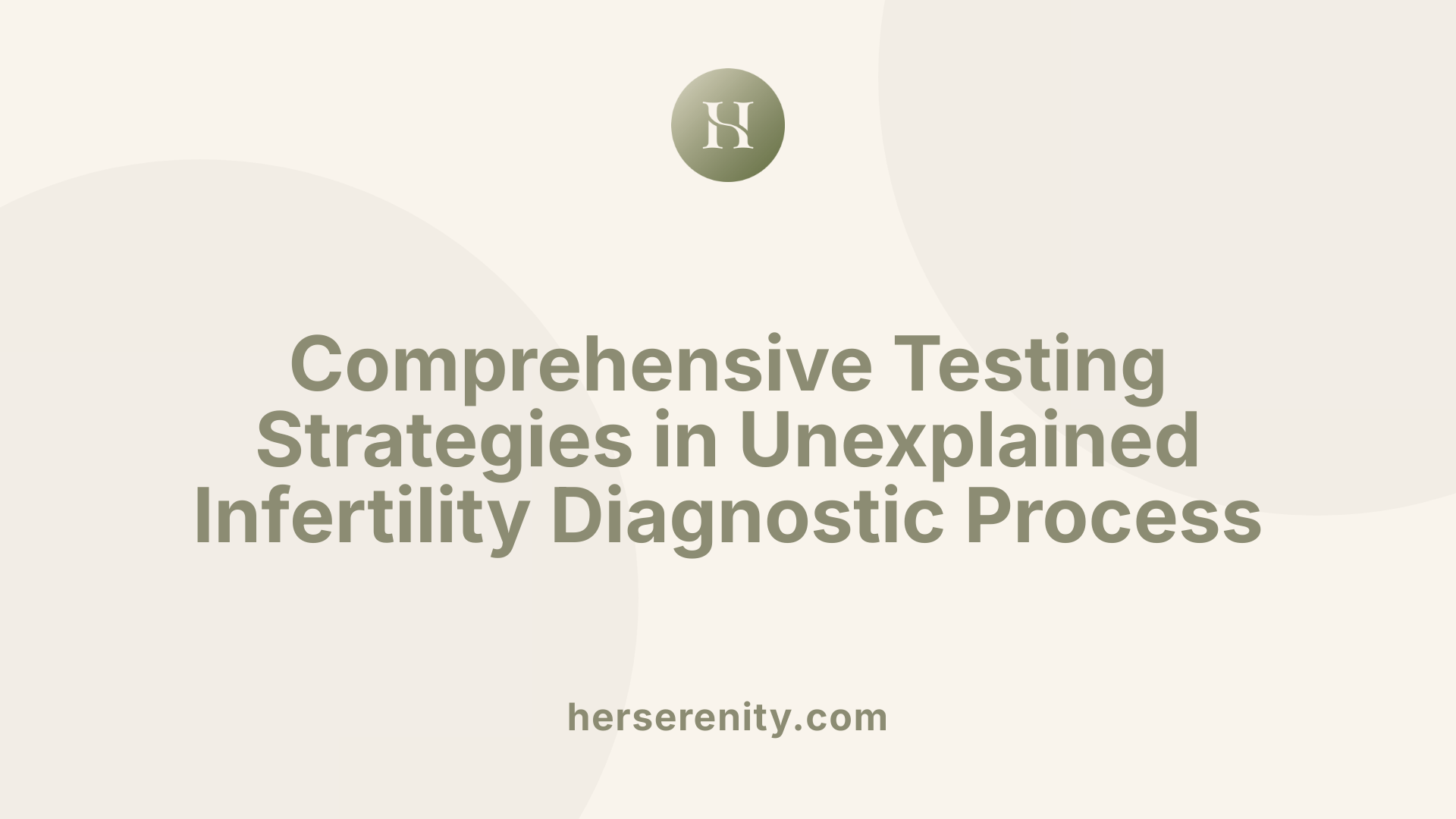
How is unexplained infertility diagnosed through testing?
Diagnosis of unexplained infertility begins with a comprehensive medical history and physical examination, focusing on menstrual patterns, previous pregnancies, and potential risk factors.
Comprehensive history and physical examination
Information about menstrual cycles, lifestyle, past infections, and surgeries helps identify subtle clues that might not appear in lab tests. This step also assesses general health and reproductive system function.
Ultrasound and hysterosalpingography
Transvaginal ultrasound is used to visualize ovarian follicles, uterine structure, and endometrial thickness, detecting abnormalities such as fibroids or polyps. Hysterosalpingography (HSG) evaluates fallopian tube patency by tracking dye flow, identifying tubal blockages that might prevent fertilization.
Hormonal panels and endocrine marker assessments
Blood tests measure reproductive hormones including follicle-stimulating hormone (FSH), estradiol, anti-Müllerian hormone (AMH), prolactin, and thyroid function. These hormones indicate ovarian reserve, ovulatory status, and endocrine balance critical for conception.
Advanced imaging and specialized tubal tests
If initial evaluations are inconclusive, further assessments like hysteroscopy or sonohysterography may explore uterine cavity issues. Specialized tubal tests can diagnose subtle tubal dysfunction or scarring causing infertility.
Genetic and semen analyses
Genetic testing may be performed to identify chromosomal abnormalities contributing to infertility. A detailed semen analysis evaluates sperm count, motility, and morphology, ensuring male factors are addressed.
In summary, unexplained infertility is diagnosed when a thorough evaluation—including history, imaging, hormonal tests, genetic screening, and semen analysis—finds no definitive cause, guiding clinicians toward appropriate treatment options.
| Evaluation Step | Purpose | Details |
|---|---|---|
| Medical history & physical exam | Identify risk factors & clinical clues | Menstrual patterns, infections, surgeries |
| Ultrasound & HSG | Assess ovarian & tubal status | Detect fibroids, polyps; confirm tubal patency |
| Hormonal panels | Evaluate ovarian reserve & hormone levels | FSH, estradiol, AMH, prolactin, thyroid tests |
| Advanced imaging & tubal testing | Detect subtle uterine or tubal abnormalities | Hysteroscopy, sonohysterography |
| Genetic & semen analysis | Rule out male factors & genetic issues | Sperm quality; chromosomal analysis |
Treatment Strategies Tailored for Unexplained Infertility
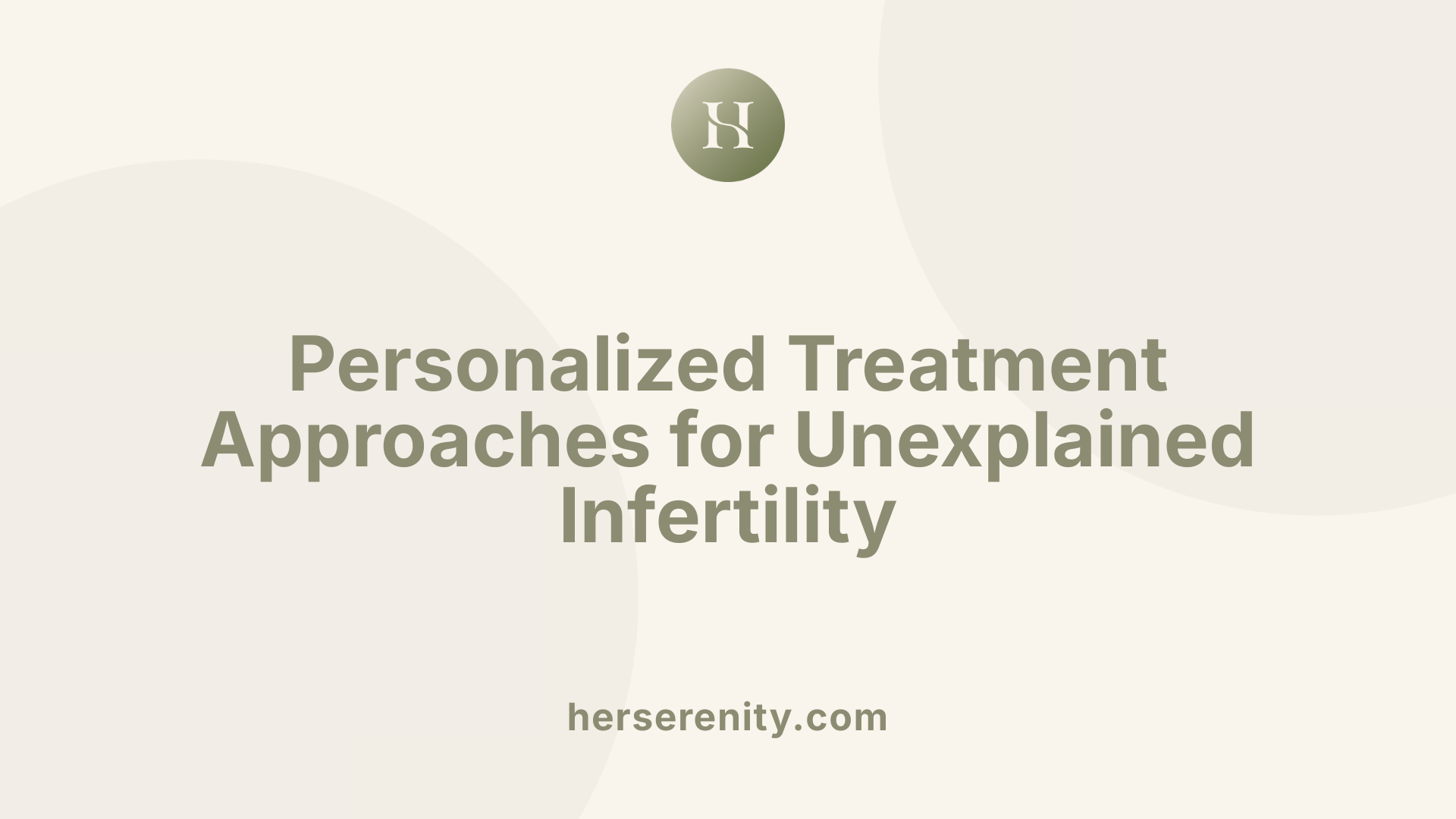
What treatment options are available for women with unexplained infertility?
Unexplained infertility can be challenging to manage as no clear cause is identified despite thorough evaluation. Treatment usually starts with lifestyle modifications and supportive care. Optimizing overall health through weight management, quitting smoking, reducing alcohol consumption, improving nutrition, managing stress, and ensuring adequate sleep contributes positively to fertility outcomes.
Lifestyle modifications and supportive care
Encouraging women to adopt healthy habits is essential. Consumption of prenatal vitamins, regular exercise, and thyroid screening are part of comprehensive care. These measures create an environment conducive to conception even when typical fertility parameters are normal.
Ovulation induction agents like clomiphene citrate and letrozole
Even in cases where ovulation seems normal, medications such as clomiphene citrate or letrozole may be prescribed to stimulate ovulation and improve the chances of conception. They act by promoting follicular development and enhancing hormonal balance, potentially increasing fertility.
Intrauterine insemination (IUI) as a first-line treatment
IUI is often the first procedural treatment option after lifestyle and medical management. It involves placing sperm directly into the uterus around the time of ovulation to improve the likelihood of fertilization. Studies indicate pregnancy rates can increase from about 5% to between 15–18% per treatment cycle with IUI.
Assisted reproductive technologies including IVF and ICSI
If IUI or initial treatments fail, assisted reproductive technologies (ART) such as in vitro fertilization (IVF) become options. IVF success rates depend on several factors, including age, reaching up to 55–60% per embryo transfer in some cases. Intracytoplasmic sperm injection (ICSI), where a single sperm is injected directly into an egg, may be used alongside IVF to optimize fertilization, especially if male factors are suspected.
Progesterone supplementation and luteal phase support
Luteal phase defects, characterized by insufficient progesterone production or endometrial response, can contribute to infertility in some women. Identifying this through hormone testing or biopsy allows for targeted treatment using progesterone supplements, administered via injections, vaginal suppositories, or oral forms, to enhance endometrial receptivity and support early pregnancy.
These tailored treatment approaches aim to improve pregnancy rates by addressing subtle or undetected factors contributing to unexplained infertility. The choices are personalized, often beginning with less invasive methods before progressing to advanced reproductive technologies if necessary.
The Role of Age and Lifestyle in Unexplained Infertility

How do age and lifestyle factors influence unexplained infertility?
Age is a major factor in unexplained infertility. Women over 35 experience a natural decline in both the number and quality of their eggs, which reduces fertility and raises the chance of miscarriage and chromosomal abnormalities. This deterioration in ovarian reserve is a leading cause of infertility as women approach their late 30s and 40s.
Lifestyle choices also play a significant role. Smoking, excessive alcohol use, and obesity can damage reproductive organs and interfere with hormone regulation. Exposure to environmental toxins adds further risk by affecting egg quality and hormonal balance. These factors may worsen fertility problems even if medical tests do not reveal a specific cause.
Preventive strategies are crucial to support fertility health. Maintaining a healthy weight, quitting smoking, reducing alcohol intake, managing stress, and avoiding harmful environmental exposures can improve reproductive outcomes. These lifestyle changes are especially important for women with unexplained infertility to optimize their chances of conception despite unknown underlying causes.
Future Perspectives: Research and Clinical Advances in Unexplained Infertility
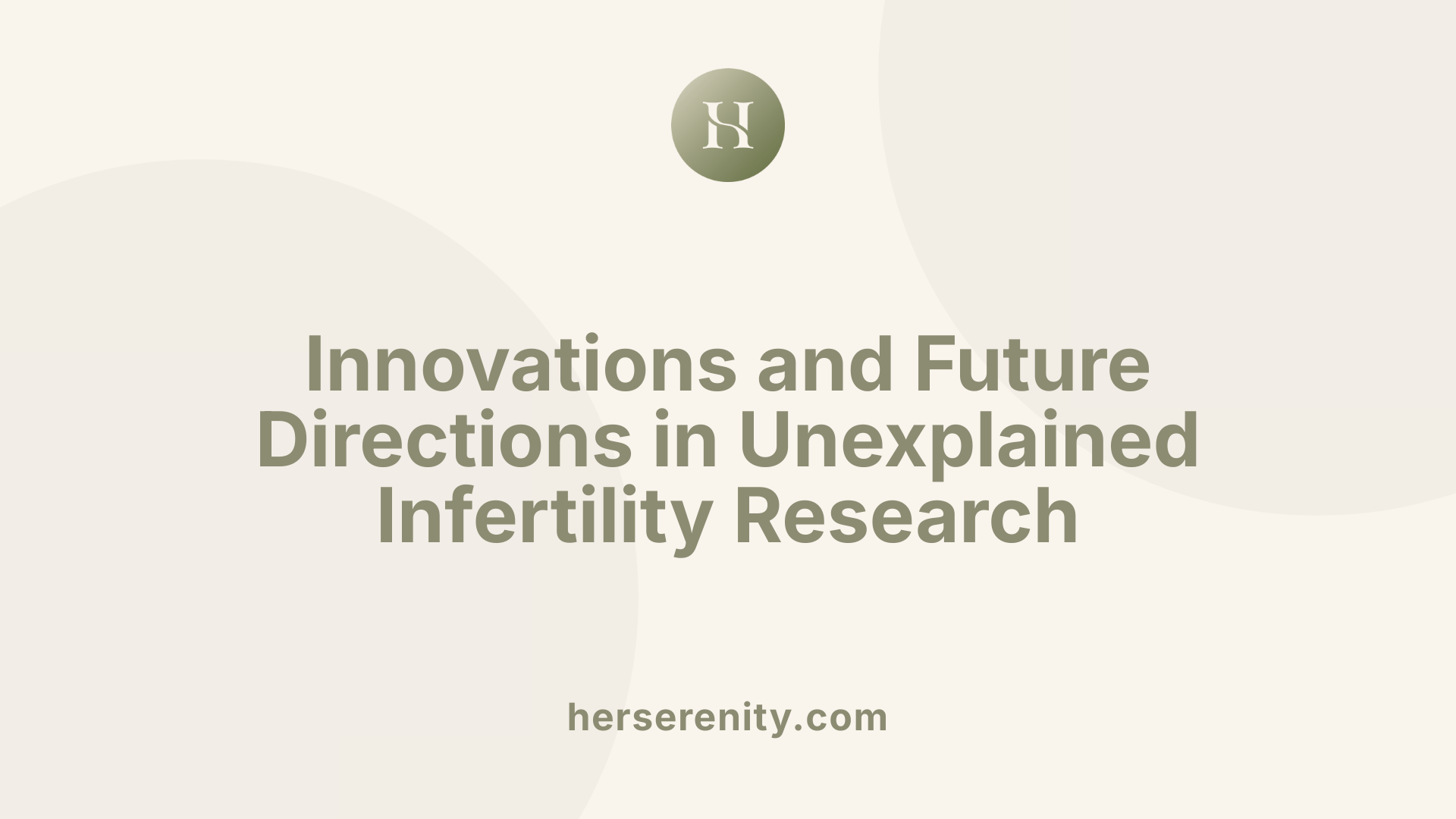
What are current research trends and future directions in addressing unexplained infertility?
Current research is centered on improving diagnosis and treatment options for unexplained infertility through several key initiatives. There is a concerted effort to establish standardized international diagnostic criteria. This standardization aims to unify how unexplained infertility is defined and evaluated, which will enhance the reliability of clinical management and enable more effective and comparable research worldwide.
Ongoing clinical trials are exploring subtle biological factors that may contribute to unexplained infertility, such as luteal phase defects, endometrial receptivity issues, and molecular abnormalities in the reproductive tract. These investigations pave the way for personalized therapies tailored to each individual's unique reproductive profile.
Supportive care remains a cornerstone of treatment, including lifestyle modifications such as improving nutrition, managing stress, and optimizing overall health. These interventions can have a meaningful impact alongside medical treatments.
Finally, expanding global access to fertility services—including assisted reproductive technologies like IVF—is critical. Many affected couples, particularly in low- and middle-income countries, face barriers like cost and insufficient infrastructure. Global efforts to improve accessibility and quality of fertility care will be crucial in addressing the widespread challenge of unexplained infertility.
Addressing the Enigma of Unexplained Infertility
Unexplained infertility remains a challenging diagnosis, reflecting the limitations of current testing to identify subtle reproductive dysfunctions that hinder conception. Through comprehensive evaluation, exclusion of common causes, and recognition of nuanced factors like luteal phase defects and endometrial receptivity, clinicians can better tailor treatment strategies to individual needs. Advances in diagnostic technology and ongoing research hold promise for demystifying this condition and improving outcomes. Meanwhile, lifestyle optimization and evidence-based therapies offer hope for many couples striving to expand their families despite this perplexing barrier.
References
- Female Infertility - StatPearls - NCBI Bookshelf - NIH
- Infertility
- Female infertility - Symptoms & causes
- Infertility: Types, Causes, Symptoms, Diagnosis & Treatment
- Unexplained Infertility
- Understanding Unexplained Infertility: Diagnosis, ...
- Infertility: Frequently Asked Questions | Reproductive Health
- The definition of unexplained infertility: A systematic review
